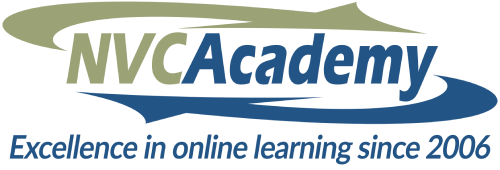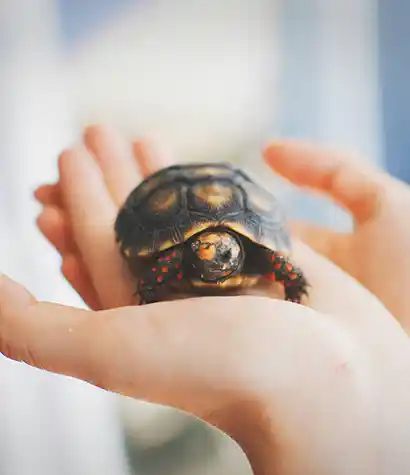
Quick Links
Subscription Preferences
Stay In Touch!
Looking for ways to keep up with NVC Academy news, get special offers, free resources, or words of inspiration? Here are five ways to stay engaged:

Thursdays, Sundays, and Tuesdays, July 6-20, 2023 (seven sessions)
7:30am-9:30am Pacific (California) Time
Many of us recognize that things are not working and none of us know what would move us, either individually or collectively, towards living meaningful lives, caring for each other and our communities, restoring health to our planetary life support systems, and coming together to address our pressing global challenges.
While not offering a “solution” to the global crises that affect each and all of us in different ways, this course is based on the premise that learning to stay within capacity limits is a subtle, deep, and potent lens that supports us to move in the direction we long for. As we apply the capacity lens within our sphere of influence, the results have surprised many of us: when we stay within capacity, it often grows.
This course is an intensive introduction and immersion. Each session focuses on a different aspect of the capacity lens, with the intention of providing a foundation for a lifelong inquiry into how to live within individual, collective, and planetary limits while caring for all life.
Although we have a detailed plan for the course session, this material is still experimental, and the arc of the sessions may shift in response to what happens within the course.
Session 1: What Makes the Capacity Lens Radical and Practical - Thursday, July 6
This session is the foundation for the rest of the course. This is where we connect overstretching beyond our individual capacity limits with collectively overriding our planetary capacity limits. As we mourn the gap between what we want and what is within capacity, we can embrace, again, humility in relation to the cycles of life and death and our own finitude. Instead of judging self and others and questioning our commitments when we reach capacity limits, we ground in tenderness and compassion. This gives us back all the energy that otherwise goes into fighting against the limits. That is when we can find practical pathways for orienting to caring for needs within capacity and with the least unwanted impacts.
Session 2: How Capacity and Willingness Interface - Sunday, July 9
One of the invisible ways in which we bring harshness to capacity limits is by confusing capacity and willingness, especially in relation to others’ choices. When someone does not do what we want, we assume it is because they do not want to, which is a likely path to judgment and separation, especially if what we want is truly important to us. When we assign a “no” to capacity instead of willingness, we are more likely to find tenderness and curiosity about how to move towards togetherness. While willingness may increase capacity, and capacity may increase willingness, neither is enough on its own to move us into action.
Session 3: Capacity Assessment and Purpose - Tuesday, July 11
Once we find our way to choosing to honor and stay within capacity limits, it becomes imperative to be able to assess our capacity more and more accurately, so that we can learn to choose with immense care what we do with our energy, skills, and talents. This is where purpose comes in. When we have a clear purpose and know what is ours to do, it supports us in deciding which of many needs we prioritize at any given moment given what our capacity is. At the same time, choosing a purpose without awareness of what our capacity is, is one common way of activating patterns of overstretching, especially for those of us who care deeply about everything. In this way, the dance between capacity assessment and purpose remains active for as long as we live.
Session 4: Strengths and Limitations: The Inner Dimension of Capacity Assessment - Thursday, July 13
Capacity assessment can happen at different levels, ranging from our own individual capacity to our species capacity. At whatever level we engage in capacity assessment, the inner dimension of the assessment focuses on what we bring to each situation in terms of capacity. Here we look at strengths and limitations, both of which can be inherent or acquired, changeable or not. As we orient ourselves to our purpose, we can only lean on our strengths; we cannot bring to it qualities, energy, experience, talent, or anything else that we do not have. Similarly, our limitations constrain what we can do and how far we can move towards vision. This is the crux of why, especially as this time in human evolution, mourning is so essential: when we know what we want and why we want it, we can easily get stuck in loops of shame and not bring forth the fullness of what we do have to offer because of being harsh towards our limitations. With mourning, we can free up energy to accept what is, to find support to compensate for our individual limitations within the whole, and to only take on and do what is within capacity.
Session 5: Openings and Obstacles: The Outer Dimension of Capacity Assessment - Sunday, July 16
The external dimension of capacity assessment moves in the opposite direction: what is it that the context within which we operate brings to us in terms of supporting or hindering our movement towards vision? This assessment is a huge exercise in humility as we recognize that we can only go where there are openings or when we have enough capacity to usefully engage with and transform obstacles. Learning to follow the openings before taking on obstacles is one way to function creatively within capacity. Given our current global crises, we can easily fall into despair, anger, or numbness when we take in that we do not have much say about the presence of openings and obstacles. Within conditions that are not of our choosing, mourning is again essential so we can free up what capacity we have to function optimally within our sphere of influence.
Session 6: Capacity Assessment and Weaving Togetherness - Tuesday, July 18
This session is where we focus specifically on the relationship between individual and collective capacity. This is where we begin to see the horrific impacts of capitalism in separating us from communal contexts. When we are left to fend for ourselves, as individuals and within small family units, we rarely have sufficient capacity to care for all that matters in the absence of the web of relationships that we evolved for. Within interdependence, we can co-hold what is needed and identify where the capacity and willingness exist to attend to it. When no capacity exists anywhere, we can recognize, collectively, the voids that would otherwise be hidden or attended to through overstretching, and invite new leadership. And when anyone has non-redundant capacities that everyone leans on, such as specific talents, experience, institutional memory, or connections, we can bring creativity to how to free them up from other responsibilities without recreating patriarchal patterns by leaning, again, on collective capacity.
Session 7: Growing Individual and Collective Capacity - Thursday, July 20
This is when we can look at what we can do to increase our capacity over time, both individually and collectively. As part of this, three paradoxes arise. One is that the energy that makes it possible to increase capacity often comes from letting go of the fight against where capacity is and of trying to force it to be more than it is. When we can do that, we can accept the necessity of behavioral anchoring, and, within it, to find more rather than less freedom to explore new options. And when we fully surrender to the simplicity of leaning on collective capacity, our individual capacity grows within the whole.
There is no set amount for this course. Though we offer below guidance to people in choosing how much to give, it is intended as support for you, not as specific requests. We invite people to register using a gift economy approach so that everyone can have access and our work can also be sustainable. We ask that you give the most that you can do without overstretching or resentment. You can learn more about our thinking and about choosing your amount here.
The live course is complete. You can register to receive access to the recorded sessions.
SIGN UP NOW GIVE AS A GIFTWhen you register, you will receive an email with complete instructions on how to access your course.
Note that course recordings display images of active speakers only, and are made available to all registrants.
The live course is complete. You can register to receive access to the recorded sessions.

Looking for ways to keep up with NVC Academy news, get special offers, free resources, or words of inspiration? Here are five ways to stay engaged: